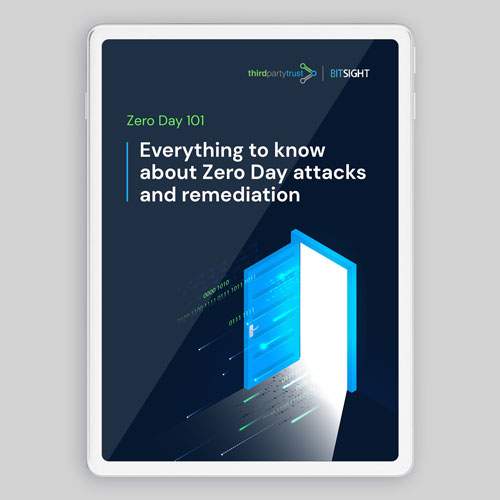Zero day exploits are behind half of the biggest vulnerabilities
More than half of the most impactful vulnerabilities -67%, to be precise- started with a zero day exploit last year. And twice as many zero day vulnerabilities were exploited before vendors even had the chance to patch them than in 2020, according to a study by Rapid7.
These figures explain why the surge in zero day attacks is an ongoing concern for security teams. Businesses increasingly run on software, and software is often vulnerable to malicious exploitation.
Developers write code every day, but unbeknownst to them, it may contain vulnerabilities. This makes zero day attacks inevitable, as attackers often spot those vulnerabilities before the developers detect and act on them.
In its 2021 Vulnerability Intelligence Report, Rapid7 analyzed the most significant vulnerabilities, exploits, and attacks from 2021.
The study found that:
- 43% of vulnerabilities were exploited in the wild
- 60% have been used in ransomware attacks
- 20 were exploited before a patch was available
- More than half of the exploited vulnerabilities in the study were exploited in attacks within a week of their public disclosure
- The average time to known exploitation accelerated to 12 days in 2021 from 42 days in 2020
WORRIED ABOUT ZERO DAYS MAKING THEIR WAY INTO YOUR NETWORK?
Webinar: Preventing Zero Days in Your Supply Chain
“The year 2021 started with the remnants of the Solarwinds supply chain data breach and culminated with the unprecedented Log4Shell cybersecurity incident. In between, there were many high-priority security threats that made 2021 a difficult year for vulnerability risk management teams around the globe”, stated Rapid7’s team.
Threats to the integrity of the software supply chain, an uptick in driver-based attacks, and a fresh wave of injection exploits are other notable trends detected by the researchers.
Evidence suggests zero day attacks hit an all-time high in 2021. This explains the narrowed window in exploitation time, all of which puts organizations under added pressure to respond to unpredictable threats.
If mass exploitation starts within days or hours of disclosure, it’s critically important for organizations to be good at the basics of risk and vulnerability management, so they can be prepared and execute emergency response procedures.
Guidance remains steady: layered cybersecurity is the best mechanism to protect your network, users, and business-critical data.
This includes:
- Firewall policies to monitor incoming and outgoing network traffic based on your rules, acting as a barrier between a trusted network and an untrusted network.
- Patch management to distribute updates to all software and firmware. Patches are important because they address bugs and vulnerabilities, closing security gaps that would otherwise leave your network vulnerable to cyberattacks.
- Multi-Factor Authentication (MFA), also commonly known as two-factor authentication, to prevent attackers from exploiting weak or compromised user credentials to access your network.
- Endpoint protection, covering all types of devices your business uses—laptops, mobile devices, printers, cameras, IoT or smart devices (e.g., thermostats), and more.
- Web content and email filtering, with software that blocks users’ access to websites and online content deemed inappropriate or dangerous, and protects your network from email-based cyber threats such as phishing, ransomware, and business email compromise.
- Security awareness training, covering cybersecurity basics and best practices to help users identify phishing emails and other common scams.
- Robust password policy, preventing password reuse and weak passwords; considering
- Third party risk management (TPRM), to vet and manage your third party vendors, continuously monitor their security posture over time, and make sure they don’t increase your organization’s exposure to cyber risk.
- Business continuity and disaster recovery plans, to mitigate the downtime and damage associated with a potential cyberattack; this will allow you to restore your data and operations from a backup, which has to be isolated and encrypted.
While headline-grabbing attacks, such as those suffered by SolarWinds, Kaseya, or Log4j have been put under the microscope, many open-source, enterprise applications, and APIs are targets of zero day attacks every day.
Don’t let every newly found zero day be a wake-up call. Stay awake and be prepared.


Don’t let zero days be “wake up calls.”
Unpredictable vulnerabilities will be an ongoing concern for security teams inthe foreseeable future.
In this guide you will learn the fundamentals of zero days, patterns from our statistical analysis, and tips to reduce risk and remediate zero days if/when they happen.




